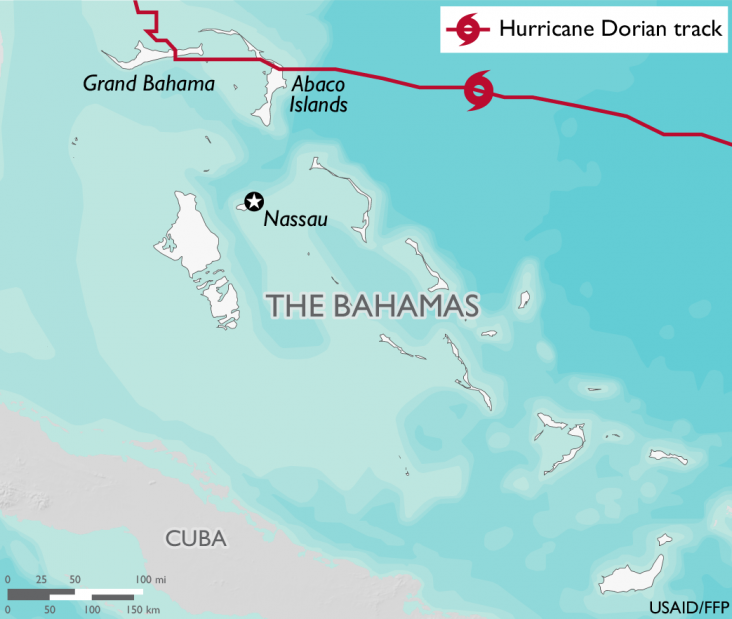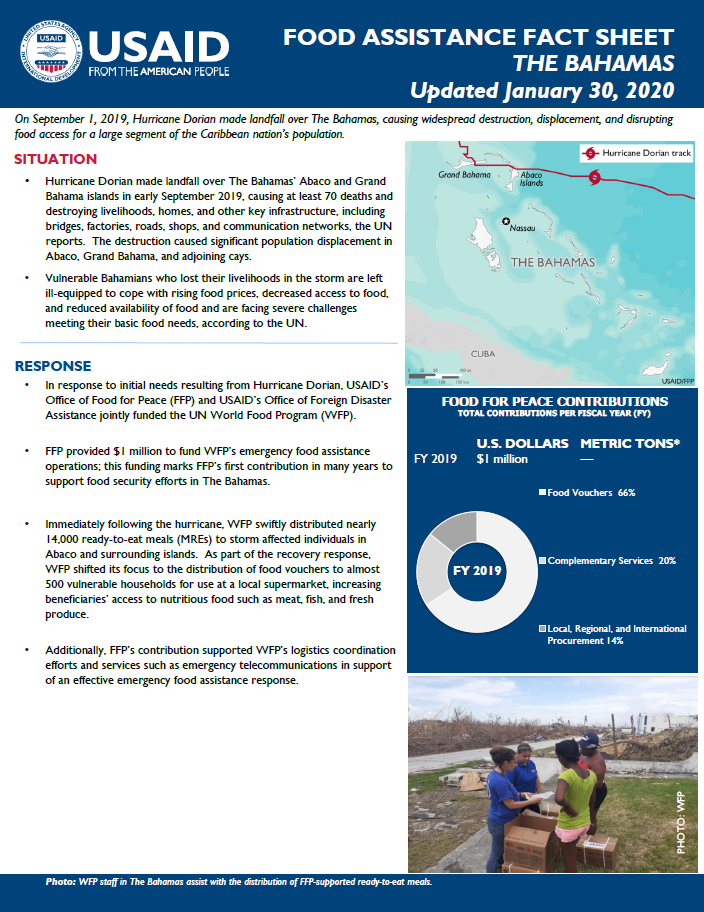Home » What We Do » Agriculture and Food Security » Food Assistance » Where We Work » Food Assistance Fact Sheet - The Bahamas
- What We Do
- Agriculture and Food Security
- Democracy, Human Rights and Governance
- Economic Growth and Trade
- Education
- Environment and Global Climate Change
- Gender Equality and Women's Empowerment
- Global Health
- Humanitarian Assistance
- Transformation at USAID
- Water and Sanitation
- Working in Crises and Conflict
- U.S. Global Development Lab
Speeches Shim

January 30, 2020
On September 1, 2019, Hurricane Dorian made landfall over The Bahamas, causing widespread destruction, displacement, and disrupting food access for a large segment of the Caribbean nation’s population.
Situation
- Hurricane Dorian made landfall over The Bahamas’ Abaco and Grand Bahama islands in early September 2019, causing at least 70 deaths and destroying livelihoods, homes, and other key infrastructure, including bridges, factories, roads, shops, and communication networks, the UN reports. The destruction caused significant population displacement in Abaco, Grand Bahama, and adjoining cays.
- Vulnerable Bahamians who lost their livelihoods in the storm are left ill-equipped to cope with rising food prices, decreased access to food, and reduced availability of food and are facing severe challenges meeting their basic food needs, according to the UN.
Food Assistance Fact Sheet - The Bahamas ![]() (pdf - 234k)
(pdf - 234k)
Response
- In response to initial needs resulting from Hurricane Dorian, USAID’s Office of Food for Peace (FFP) and USAID’s Office of Foreign Disaster Assistance jointly funded the UN World Food Program (WFP).
- FFP provided $1 million to fund WFP’s emergency food assistance operations; this funding marks FFP’s first contribution in many years to support food security efforts in The Bahamas.
- Immediately following the hurricane, WFP swiftly distributed nearly 14,000 ready-to-eat meals (MREs) to storm affected individuals in Abaco and surrounding islands. As part of the recovery response, WFP shifted its focus to the distribution of food vouchers to almost 500 vulnerable households for use at a local supermarket, increasing beneficiaries’ access to nutritious food such as meat, fish, and fresh produce.
- Additionally, FFP’s contribution supported WFP’s logistics coordination efforts and services such as emergency telecommunications in support of an effective emergency food assistance response.
Food for Peace Contributions
Total Contributions:
| U.S. Dollars | Metric Tons | |
|---|---|---|
| Fiscal Year 2019 | $1.0 million | --- MT |


Comment
Make a general inquiry or suggest an improvement.